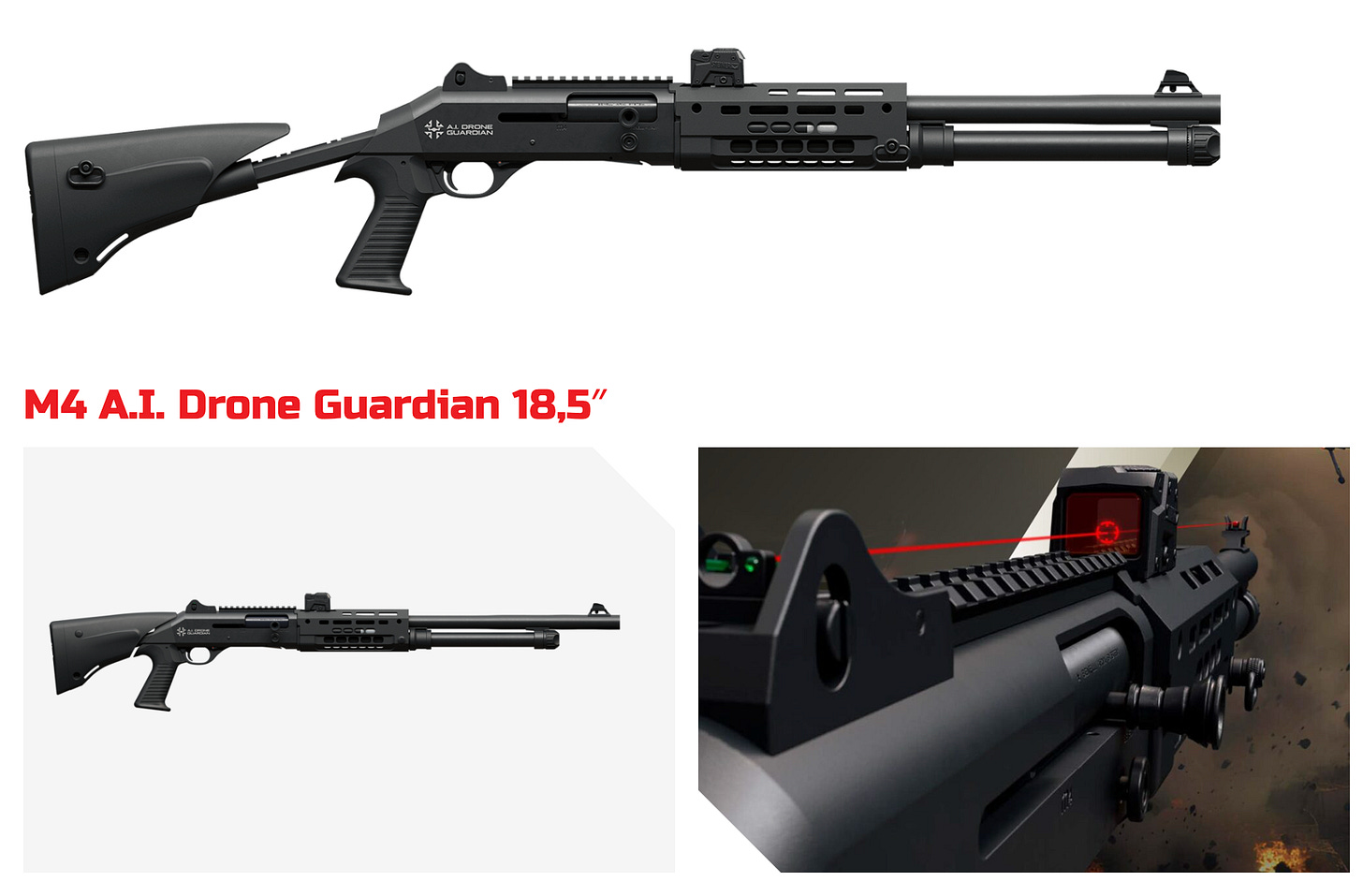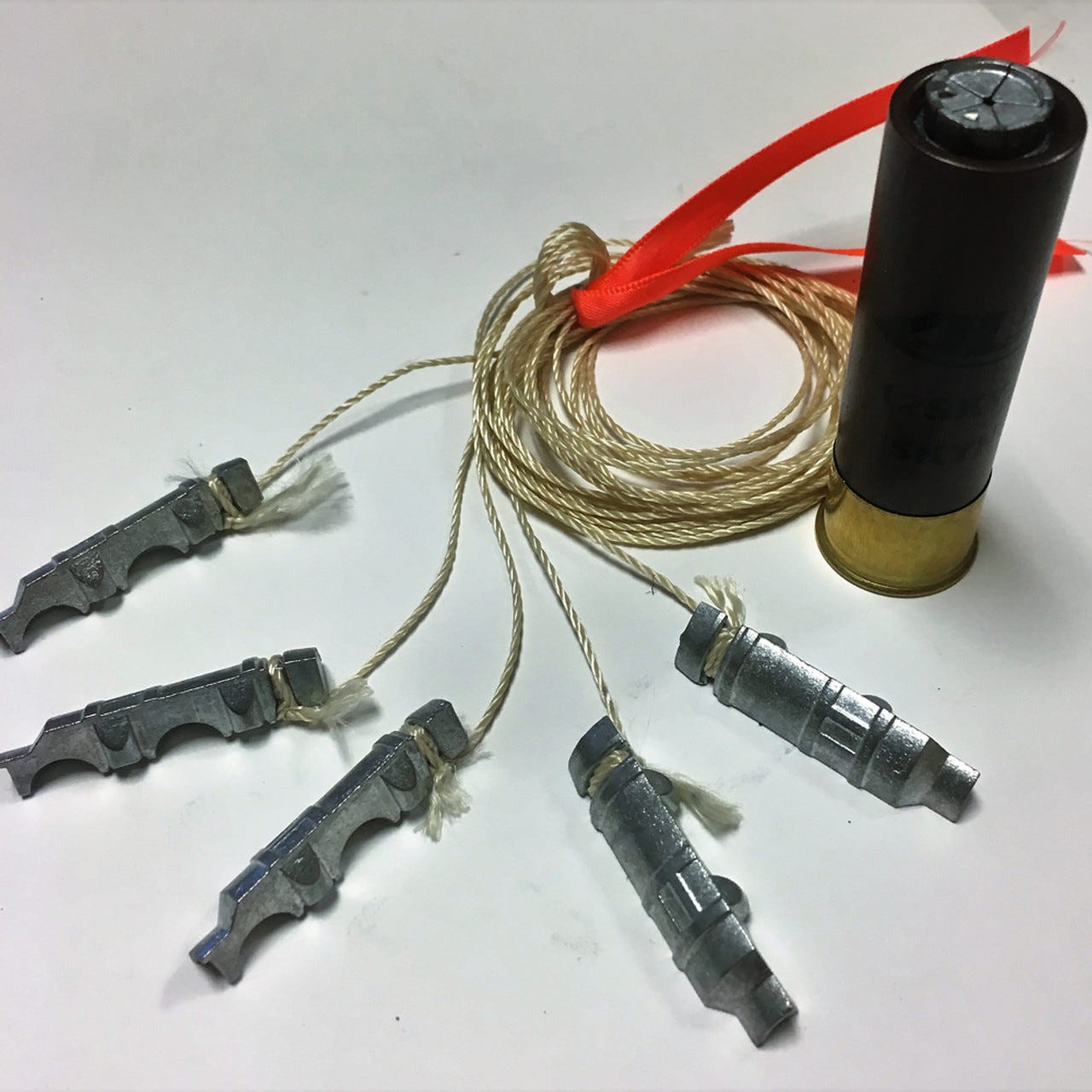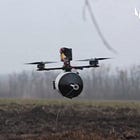Shooting at Drones with Rifles and Shotguns
When the weapons you have are the weapons you need.
If guns are good for hunting birds, why not use them for hunting drones?
Both the Ukrainian and Russian militaries have used shotguns as a defense against incoming drones—especially when methods like radio jamming have failed.
In this essay, we’ll look at the benefits and drawbacks of using rifles and shotguns to neutralize drones—and how to make guns more effective.
The best type of guns and ammo
Shotguns

If you are shopping for anti-drone weapons at your local sporting goods store, you can’t go wrong with a 12-gauge shotgun loaded with #4 buckshot.
But if you have access to higher-end weapons, several semi-automatic shotguns are decent for drone defense:
Benelli M4. In 2023, the Belgian Air Force announced it would adopt the M4 as an anti-drone weapon to secure its airbases. Benelli sells a variant of the M4, the Drone Guardian, optimized for hitting targets at greater distances.
Safari HG-105M. Ukraine’s Ministry of Defense approved the HG-105M late last year for close-quarters combat and anti-drone operations.
Hatsan ESCORT BTS12. Ukraine also ordered a batch of these Turkish bullpup shotguns as anti-drone weapons.
Rifles
Compared to shotguns, rifles have the downside that they can only shoot one bullet at a time. That bullet is less likely to hit—and fatally damage—the drone.
You can make a basic rifle (like the AR-15) more effective by attaching advanced optics to help you hit small drones from far away.
And if you pick heavier ammunition for your rifle, you can increase the chance that every bullet that hits the drone damages it.
Downsides of rifles and shotguns
But outside of the Russia-Ukraine War, shotguns and rifles have found relatively little use as anti-drone weapons. They have several flaws that can make shooting down a drone dangerous for the shooter:
Limited range. Benelli claims that their M4 Drone Guardian has a range of 50 to 100 meters. Other shotguns should have a similar or slightly shorter range.
Collateral damage. If a shooter is defending a crowded shopping mall against a drone, then every missed shot risks hitting a civilian. A missed shot could damage a person or property up to 1,000 meters away1, even if you can only damage a drone from 100 meters away.
Limited firepower. Military drones are designed to keep flying even when damaged. It could take many shots to neutralize one.
Fire and explosion hazards. If a drone is carrying a bomb, it could detonate if shot. If the drone is carrying a lithium battery, it could catch fire if shot.
The future of rifles and shotguns
Today’s rifles and shotguns can be augmented with new technologies to make them more effective at airborne targets.
1. Drone-busting ammunition

There are several new types of anti-drone ammunition designed to work with existing semi-automatic shotguns:
Anti-Drone - Long Effective Range (AD-LER). Made by the Swedish ammunition firm Norma, AD-LER is a shotgun round with 350 tungsten pellets designed for use with the M4 shotgun against drones.
SKYNET. These are 12-gauge shotgun shells that expand into a five-foot diameter net—designed to tangle a drone’s propellers.
Perekhvat. This is a brand of Russian anti-drone shotgun ammunition. It is also designed to tangle propellers. Each round delivers a slug that breaks into six pieces connected by Kevlar strings.
2. AI-powered fire control systems
The main problem with using a rifle to shoot down a drone is that a typical human cannot aim well enough to hit a small, fast-moving drone.
But artificial intelligence-powered optics and fire control systems can help a human shooter achieve superhuman aim.
SMASH 3000 is an AI fire control system that can be added to an existing rifle. Built by the Israeli firm Smartshooter, a shooter with a SMASH-augmented rifle can “lock” onto a target drone. SMASH helps the shooter aim, giving a visual indicator to shoot when it estimates the probability of hitting the target is high.
Below is a demo view of the SMASH 3000 from Smartshooter’s YouTube account:
Smartshooter claims that SMASH 3000 can help eliminate small drones during the daytime from up to 200 meters away, and ground targets from 300 meters away.
In 2022, the US Army announced that it was adopting the SMASH 3000 fire control systems as part of its larger anti-drone initiatives.
Several other firms are building similar handheld AI fire control systems, including ZeroMark and AimLock.
Conclusion
Rifles and shotguns are desirable anti-drone weapons only because of their broad availability. Otherwise, these weapons have limited range, effectiveness, and safety.
If you have the time and money to invest in specific anti-drone weapons, there are better options, like:
Radio jamming. Some drones can be stopped by jamming their ability to receive radio communications. Jamming is a good option to disable consumer drones—but only if the surrounding government regulations allow you to jam radio frequencies.
Net launchers. These devices launch projectiles that unfold into nets that tangle an enemy drone’s propellers. SKYNET (mentioned above) is an anti-drone net that can be shot from a 12-gauge shotgun. But other nets can be deployed via a grenade launcher, an interceptor drone, or other weapons systems.
Further reading
We have written about several other methods for disabling drones.
Credit for this essay’s cover image goes to Mitch Barrie on Flickr.
The United States Marine Corps’ Range Safety Pocket Guide says that the worst-case straight-line distance a 12-gauge shotgun slug could travel is slightly over a kilometer. And the worst-case straight-line distance for a 5.56 mm M193 ball is around 3,100 meters.


